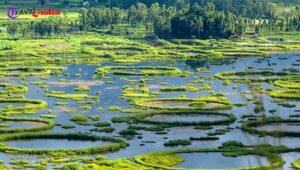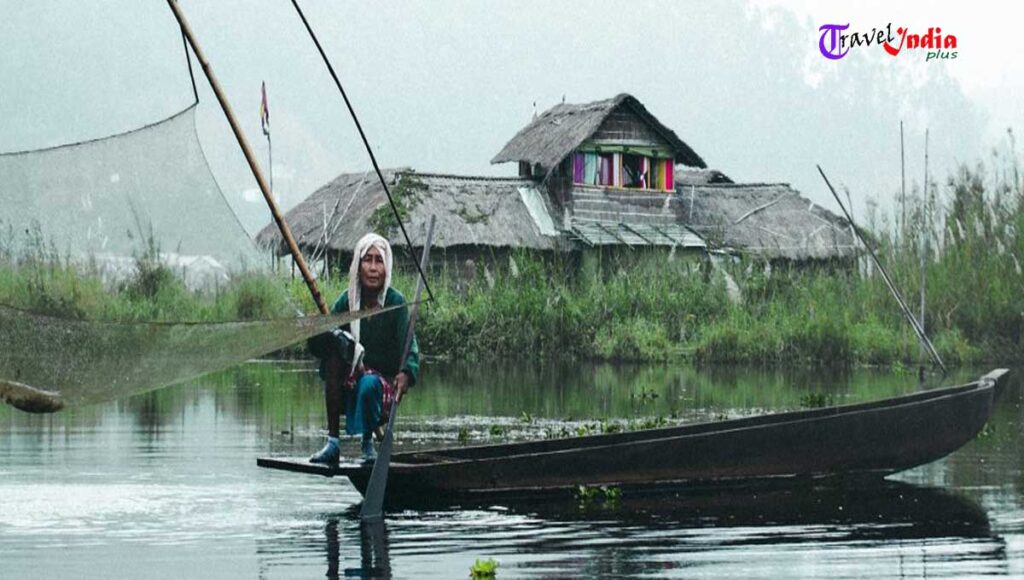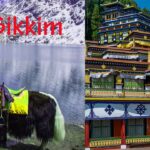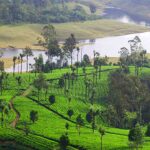Manipur is known as Jewel city of India where mother nature has extra bagful in her bounty. Manipur is other way is least known and also least discovered to the world.
Manipur Represent Isolated Variety Of Life Style
Manipur is one of the unexplored natural paradise in North-East India. The valley spread around 22,356 km areas, Manipur is isolated hilly state. It separated in distinct two zones, valley and the surrounded hilly areas.
Due to geographical isolation and inaccessibility Manipur is undiscovered to the world. It does not effected to flow the Indian culture in to the valley. The 67% areas of the lands used as natural vegetation. Cultivable areas are all full of clays and silts.
The valley was evidenced once a lake and became sited over the time with it’s streams, rivers and water falls in the hills. The tropical to sub alpine forests are wet forests, temperate forests and pine forests forms.
The forests are formed between the altitude of 900 to 2700 m above sea level and blessed with various magnificent species of floras and faunas that co-exist naturally.
Manipur boasts 500 variety of orchids and 472 of them has identified. The rare species like Clouded Leopard, Spotted Linsang, Hooklock Gibbon, Slow Loris are found in the forests. Apart from those “Sangai, the dancing deer” which is unique most in the habitat.

The main population in Manipur is known as “Meitei” or Manipuries who has a separate identity. The history of Meitei society, their customs, art, culture, religious belief and rich literature has found from their old manuscripts.
There are 29 tribes habitat in Manipur who are largely divided in to two separate groups are Nagas and Kukis. Most population of hills and valleys depends on majorly to agriculture. Around 88% in hills and 60% in valley which people depends on mainly agriculture.
Beside it they also support with animal husbandry, fishery and forestry. They mainly produce rice and also surpluses with sugarcane, mustered, tobacco etc.
Also Read None Other Than Assam Boasts Spectacular Natural Wonder
Why is Manipur Famous For Tourism ?
Manipuris are famous for their well developed Handloom products. Ladies are mainly produce hand made garments and shawls that are typically famous Manipuri style. They wore simple but elegant style cloths.

Handloom industry is the largest cottage industry in Manipur. They created a large demand through out the world. Their garments are export to many countries globally. They have a strong cultural background.
Manipuri dance, songs and dramas are unique and famous through out the world. Their dances comprises with very decorative songs and dramas. The famous dance drama is “Raslilla’ originated from Manipuri Gharana culture.
The most famous festival in Manipur called “Lai Haraoba”. The dances presented by them which is an evidence of “Vaishnavite” culture among them.
Their dance drama comprises of Gods and Goddesses with bright and ornamented unique dresses. It looks so gorgeous and colorful that make them most unique in style.
The festival “Lai Haraoba” celebrated during the month of March- April for 10 to 15 days. They perform “tandava” and “Lasya” form of dance with incarnation of Lord Shiva and Parvati, depicting the creation of life.
Manipuris celebrated Holi in the day of Basant Purnima associated with Sri Chaitanya Mahaprabhu birth day in Bengal. They perform “Thabai Chouba” dance during the ceremony.
“The Rasa Lila” dance form is epitome of Manipuri culture which is performed in Basant Purnima, Sarat Purnima and Kartika Purnima. This dance form is dedicated to Radha Krishna celestial love with Gopis devotion to the Lord.
The Most Important Places To See In Manipur
The Royale Place of Manipur, Govindjee Temple, War cemetery, Khwairamband Bazar, Shahid Minar, State Museum and magnificent hills, valleys, springs with it’s ultimate serenity.
The famous and largest fresh water lake in North-East India is located in Manipur is called “Loktak Lake”. On the Western fringe of Loktak Lake known as “phubala”. “Sendra Island” is one of the important location in Loktak Lake.
It is also famous for wide spread vegetation. It is a broad lake with a land areas of 250 square km to 500 square km, varies for rainy seasons.

The “kaibul Lamjao National Park” is only floating National park which is located on the Loktak Lake and seems floating on it. The Swamps on the lake in the shape of circle called Phumdis in local language which added an elegant unique beauty of the Lake.
The Endangered species of Manipur is Sangai, the dancing deer, which is only sheltered at Kaibul Lamjao National Park. The Loktak Lake is a shelter for 250 different species of aquatic plants, 400 species of animals and different species of birds also.
Variety of bird species like lesser eastern jungle crow, East Himalayan pied Kingfisher, Skylark, Black Kite, Northern hill Myna and many others found in Loktak Lake which make the lake as bird watcher’s Paradise.
So, Manipur is a land of blessed divine serenity, simple tribal community, exotic natural resources, plenty of amazing flora and fauna, makes the destination a must see for the tourists who can explore the lifetime memorable experience to cherish for long.
Frequently Asked Questions And Answers
Ques 1. Why is Manipur famous for tourism ?
Ans 1. Manipur is a rich cultural and traditional place with spectacular natural beauty. Simple life style of Manipur wins your heart with warm well come of lovely helpful people. Manipur is also famous of their festivals, dance, music and traditional hand looms.
Ques 2. Why Manipur is called Jewell of India ?
Ans 2. Manipur is a oval shaped valley which is surrounded by nine hills range like a jewelry ornament.
Ques 3. Which is the best month to visit Manipur ?
Ans 3. Manipur is recommended to visit from the month of October to March when weather is soothing for travel.
Ques 4. Why Manipur is called Mini Switzerland in India ?
Ans 4. The scenic beauty and abundant of natural lush greenery, awesome landscape, magnificent hilly areas covered 75 percent of land in Manipur remind us natural beauty of Switzerland.
Ques 5. Can we go Manipur from without permission ?
Ans 5. No. no outsider is allowed in Manipur without ILP since the ILP regime applies for the entire state of Manipur.








You are a very smart person!
What’s Happening i’m new to this, I stumbled upon this I’ve found It positively useful and it has helped me out loads. I hope to contribute & aid other users like its helped me. Great job.